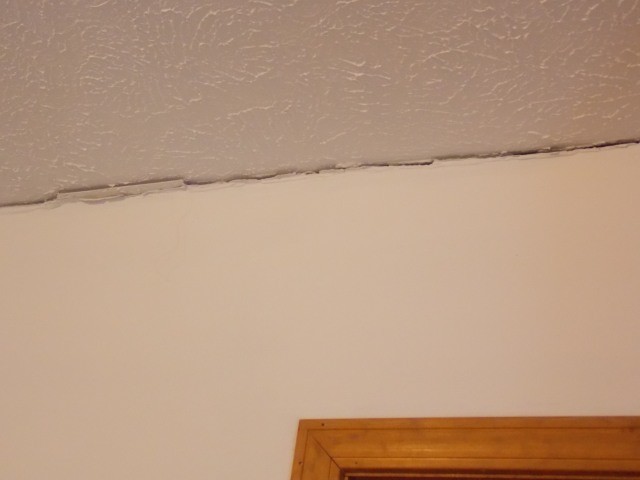Cracks along your wall and ceiling can be disconcerting, hinting at underlying issues that need attention. In this informative guide, we explore the common causes, potential dangers, and effective solutions for a Crack Along Wall and Ceiling, ensuring you have the knowledge to address this concern in your home.

Understanding the Significance: Crack Along Wall and Ceiling
Why Does a Crack Along Wall and Ceiling Occur?
Cracks in these areas can result from various factors, ranging from natural settling to more serious structural issues. Identifying the root cause is crucial for effective resolution.
Common Causes of a Crack Along Wall and Ceiling
1. Settling of the Foundation
Over time, a house undergoes settling, causing shifts in its foundation. These shifts can manifest as cracks along the wall and ceiling. While some settling is normal, excessive movement may lead to more severe structural problems.
2. Temperature and Humidity Fluctuations
Extreme weather conditions, especially in regions with significant temperature variations, can cause materials to expand and contract. This constant movement can result in cracks over time.
3. Water Damage
Water leaks, whether from plumbing issues or roof damage, can weaken the structure of your walls and ceiling. The resulting moisture can lead to the development of cracks as the materials lose their integrity.
4. Poor Construction or Materials
Inadequate construction practices or the use of subpar materials during the building process can contribute to cracks. This emphasizes the importance of quality construction to prevent future issues.
Assessing the Severity
Evaluating the Impact of a Crack Along Wall and Ceiling
Understanding the severity of the crack is essential before implementing any solutions. Here are some key indicators to consider:
- Size and Width:
- Small, hairline cracks are typically less concerning.
- Larger, wider cracks may signify more significant structural problems.
- Vertical vs. Horizontal Cracks:
- Vertical cracks are often a result of settling and may be less severe.
- Horizontal cracks may indicate more serious issues, such as foundation problems.
- Associated Symptoms:
- Check for additional signs like uneven floors, doors or windows that stick, or visible gaps. These can provide insights into the root cause.
Read too: Help! My Ceiling Is Falling Down: Understanding Causes and Solutions for a Deteriorating Ceiling
Effective Solutions for Repair
Addressing the Root Cause
Before repairing the visible crack, it’s essential to address the underlying issue to prevent future recurrence. This may involve consulting with a structural engineer to identify and resolve foundational or structural problems.
Repairing the Crack
- Small Cracks:
- Hairline cracks can often be repaired with a simple application of joint compound or patching plaster.
- Larger Cracks:
- For more extensive cracks, using mesh tape and joint compound provides added strength and durability.
- Structural Repairs:
- In cases of severe structural issues, professional assistance is crucial. This may involve foundation repairs, addressing water damage, or even reevaluating the construction of the affected area.
Conclusion: Ensuring a Structurally Sound Home
In conclusion, a Crack Along Wall and Ceiling is not just a cosmetic concern; it can be indicative of more significant problems. Understanding the causes and severity is the first step toward effective resolution.
Regular inspections, prompt repairs, and, if necessary, consultation with professionals can ensure that your home remains structurally sound. By addressing the issue at its root, you can enjoy a safe and stable living environment for years to come.